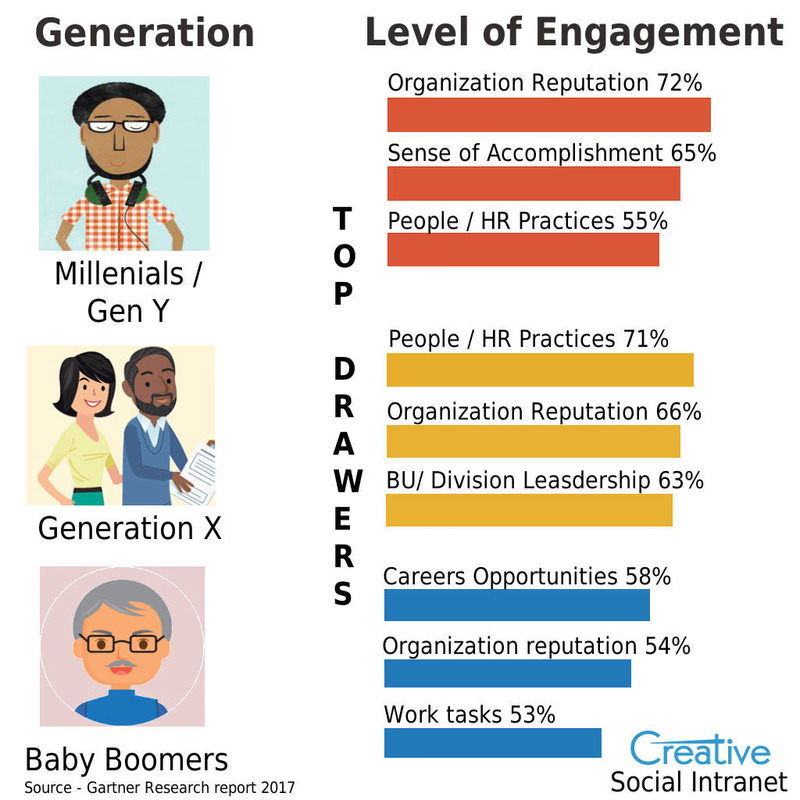Why Intranets are still the Key Digital Workplace Networks?
Date: 12-Mar-2019

So what is happening in the intranet space?
Recent research defines the many developments and trends that enterprises globally with effective intranets are today incorporating into their design. And according to this recent research, simplification of intranet design was the year’s greatest feature-influencing trend. The greatest intranet solution providers today are focusing on foundational design elements such as artificial intelligence (AI), content, and page structure rather than on the latest user interface.
Even though organizations believe that mobile is an important communication element for their employees, recent study records that intranets have taken a realistic, practical approach to mobile design, as was required from working within very real resource restraints. And in some cases, it was seen offering only the top tasks on mobile instead of offering everything that is on the intranet. However, it remains to be seen what will be the exact role of intranets over the next couple of years.
With the rise of the digital workplace, though it has become the easiest way to connect remote far away workers to their colleagues, what gets lost in these tools is the communication connection from distinct executive leaders when it comes to relaying company news.
Though the intranet communication tools have clearly made peer-to-peer communication easier for employees, companies with desk-less workers still struggle to maintain their employees engaged in the overall business happenings. This is particularly in the hospitality, manufacturing, retail, and healthcare industries.
Flexibility is critical when building an intranet. Companies need to identify which business sectors of theirs will use the intranet, from where, and what kind of devices they are connected to.


It’s quite arguable that even if there are failings in many intranets, there are also problems with social networks. Despite the growing popularity of social networks and media, intranets have their own unique place in the enterprise as a resource center. However, they are hopelessly outdated when it comes to conveniently delivering objected, timely information. “Collaboration tools can be a step in the right direction, but still both fall short of meeting the real communication needs of the enterprise. Technology has changed drastically the way we communicate. The whole outlook is way different than the past. For example, We don’t see the yellow pages anymore to find a phone number; we look at our mobile devices instead.
We don’t any longer wait for the evening news to educate ourselves as to what happened in the day since we can get news on the go as it happens via push notifications. One of the major drawbacks with intranets today, is that companies must anyhow engage employees in a manner that reflects how workers communicate in their everyday lives.
Likewise, Social networks are not perfect either. Though Collaboration tools may be useful for smaller teams, in bigger enterprise organizations, they often only add chaos with no solution to prioritize important messages or track who has received what. For example: suppose the CEO’s messages about some important 2018 goals, and this might come right underneath a silly post about the car keys someone found in the parking lot. Then this will definitely reduce productivity and at some point, people may just stop paying attention.
Employee engagement is key to the Digital workplace. Irrespective of what communication system companies decide to select – intranet or social networks – getting the workers to use that system effectively is key to its success. Here the most important point to note is people will actually use the system that you have in place. Sometimes different teams adopt their preferred different method of communication. This is not good and will lead to disjoint organizations.
Thus, from a managerial stance, it’s vital to gather feedback and then dictate which system should be used. Or else critical and crucial information can get lost in emails or some other distant system your team doesn’t have access to.

Rather than the hype, or ‘peer’ pressure from competing companies, the vital decision on whether to use social networks or intranet should be entirely based on business needs. Intranets prove to be beneficial to those businesses which have unique or of its kind internal needs that cannot be met by an existing project management system.
Admittedly the main benefit of an Intranet is that it can be custom-built, as in you can include additional unique features that will help your business requirements.
The ability to reach beyond the firewall is one of the superior capabilities that intranets must offer to ensure employee engagement. An intranet allows all workers access to required documents and data without having to use third-party products that have a monthly or yearly subscription. It helps to speed up the process of document sharing too. Contrary to setting up an extranet, though, workers get the same benefits, it allows outside third-party sources, like clients, access to content as well.
Thus, we can conclude that…….
Capabilities like external communication and sharing, page creation and sharing, and even collaboration are keeping intranets relevant and key digital workplace communication networks even if intranets have fallen out of grace in recent times, especially with the rise of social networks.
ENGAGEMENT DRIVE PERFORMANCE